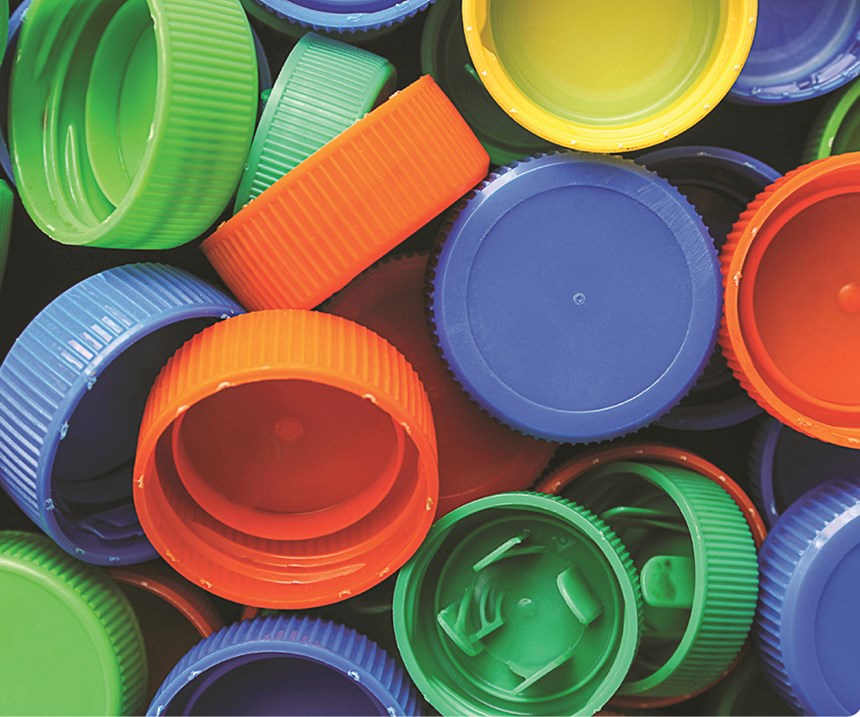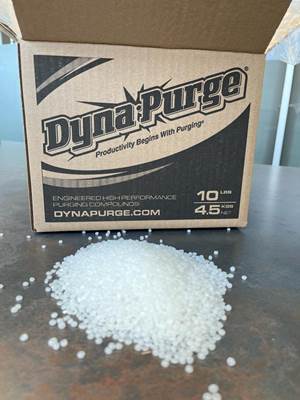Avoid These Three Mistakes to Get the Most from Color
Here are the key misconceptions and common practices that keep processors from reaching the heights of coloring proficiency. Find out if you’re stumbling into these pitfalls, and learn how and why you should swerve around them
Coloring natural polymers in any process gives a degree of freedom and flexibility that’s not possible with pre-colored materials. Taking a savvy approach to both liquid and solid color maximizes these benefits and helps processors to stay competitive. Below are three common areas that can trip processors up when it comes to color. Learn ways to avoid them along with the best practices you can use to maximize color in your operations.
Mistake 1: Assuming that the choice between solid and liquid colorants is an either/or decision, and that the chosen technology must then be used for every single application.
Why it’s a mistake: Solid and liquid colorants each have certain applications where they make the most sense in terms of coloring effects, efficiency, and results. By ignoring one or the other, processors may also be turning their backs on greater productivity, better color quality, and even innovative special effects.
How to avoid it: Start evaluating applications with an eye toward the right color technology rather than relying on what type of equipment is currently installed. End-use applications are key to determining whether to use liquid or solid colorants, with the focus on the coloring method that will produce the highest quality finished parts.
Background: When it comes to coloring polymers, the two main technologies are solid color masterbatches and liquid color concentrates. Adding pigments to a polymer carrier creates a masterbatch, and the resulting pellets are blended with natural-colored base polymer at a designated letdown ratio. A masterbatch can also include special effects for aesthetic value, or functional and performance additives that improve final part properties and performance. Liquid color concentrates, on the other hand, are the result of dispersing pigment or dye into a liquid carrier system. Liquid color concentrates are also dosed (blended) at a specific use rate depending on the color intensity goal. Additives that improve aesthetics and performance can be added to liquid color mixtures as well.
Highlight on liquid: Liquid colorants are typically a great choice when a transparent, translucent or tint color is desired. These effects often appear in PET, polyolefins, and PVC. Colorants delivered by liquid can be used in all plastics processes and are commonly found in injection molded preforms for stretch-blow molding applications as well as in extruded sheet, fiber, and film.
Highlight on solid: Solid colorants are compatible with a wide range of polymer applications, and are appropriate when highly opaque colors are desired. They are also a good choice for injection molded and extruded applications. Extreme opaque effects call for highly concentrated masterbatches and higher letdown ratios.
Bottom Line: Toss out the hard and fast rules when it comes to selecting one color technology or another, and rely instead on what’s best for the specific application. Liquid and solid colorants each have their own unique benefits and boundaries. Liquid colorants may be the best fit if you’re looking to add a tint to PET bottles, but a solid colorant may work better for creating opaque packaging, especially in thin-gauge applications. End use, material, desired hue, and personal preference all play important roles when deciding which technology is best for a specific product.
Mistake 2: Playing it safe by selecting the same tried-and-true colors and avoiding special effects or patterns.
Why it’s a mistake: Better safe than sorry? Not always. By Sticking only with what’s known, processors can stunt their growth or even give up market share to more innovative competitors.
How to avoid it: Take a serious look at what special effects are available and consider how they might be used to help OEM customers gain market share. Employing just a small amount of time exploring new options—metallic effects, camouflage, shimmers, and more—can pay off in terms of new and/or expanded business. If fear of the unknown is an issue, or if a former experience with metallics or pearlescents, for example, has created fear of using them again, consider asking your colorant supplier for ways to avoid these issues.
Background: Manufacturers are constantly trying to find new ways to make their products stand out, and special effects provide countless possibilities to differentiate their products. Processors who specialize in packaging are already in on this secret, as shelf appeal is king in their world. Consider the impact that special-effect colorants might have on sporting goods, toys, camping gear, or even home health goods. New effects are being developed every day, so stay current to stay competitive.
Highlight on liquid: Traditional methods of gloss preform and blow molding can be used with liquid colorants, so there is no need to adopt new technologies for liquid special effects. These range from gloss, matte, neon, and shimmer to chrome-look and tints.
Highlight on solid: Solid colorants can be used to create special effects, such as glow-in-the-dark, edge glow, and neon. They can also recreate intense patterns such as wood looks, marbling, brushed metal, or camouflage.
Bottom Line: Color plays a major role as a means to differentiate and dazzle customers. Product developers in many industries, from consumer and sporting goods to medical devices and automotive, rely on it to gain and grow market share. Processors who serve these industries can bring much more to the table if they’re able to offer the newest special effect colors, and process them with ease.
Mistake 3: Treating the equipment needed for coloring as an afterthought or as a one-size-fits-all solution.
Why it’s a mistake: This is really two mistakes, but they are closely related. In the first scenario, a processor gives little thought to the sizing and type of equipment that will be needed for a given application and color technology. This can lead to a less-than-optimum processing experience that also produces less-than-consistent results. In the second situation, feeding or pumping equipment is purchased for either solid or liquid color technology, and that same-sized equipment is used for every application.
There’s actually also a third potential pitfall here: A processor who purchases one type of equipment (liquid-color dosing or solid-color feeders) may wrongly believe their operation cannot accommodate the other type of color technology. This thinking limits the ability to apply the best color technology for each application, which in turn can affect quality and competitive ability.
How to avoid it: The answer here depends on the type of operation. Custom processors who serve more than one industry and offer multiple types of processes would be well served by investing in a range of pumps and metering equipment for liquid color, as well as various sized feeders for solid color. The specifics on sizing depend on the applications themselves as well as the size of processing machinery.
Captive processors have a clear idea of the types of parts they’ll be producing, and can narrow down the scope to accommodate just those applications.
In either case, keep in mind that both liquid and solid coloring equipment can coexist in the same location. Processors who are set up for solid color have successfully integrated liquid-color technology by adding portable dosing equipment. Conversely, operations that predominantly use liquid color have added one or solid color cells as the needs of their customers dictated.
Highlight on liquid: Different liquid-color viscosities are required for different base resins and effects, and these various viscosities need different types of pumps. There are two common types of pumps: peristaltic and progressive cavity. Peristaltic pumps are ideal for short production runs and frequent color changes, and are typically used for injection molded parts. Progressive-cavity pumps are recommended for continuous accuracy in longer production runs for injection molding, fiber, and other extrusion applications. On some metering equipment, pump types can be easily interchanged.
Highlight on solid: Feeder sizing can make the difference between a well or poorly distributed colorant. Sizing should be consistent with letdown ratio and machine run rates. Multiple solid feeders can be added on processing machinery, allowing multiple additive and/or color feed streams (i.e., marble or wood effect).
Bottom line: Remember that the equipment used to deliver color for injection molding, blow molding, or extrusion is a key to maintaining consistency, quality and efficiency. It needs to be sized and selected with the application and process in mind.
ABOUT THE AUTHORS
James Petrie is marketing director, North America, for PolyOne Color & Additives, Avon Lake, Ohio, where he has worked since 2010. Contact: (440) 930-1000; James.Petrie@polyone.com; polyone.com.
Gary Fielding is global marketing director, PolyOne Color & Additives, working out of the Knowsley, U.K. facility. Contact: Gary.Fielding@polyone.com.
Related Content
How to Optimize Color Evaluation of Recycled Plastics
The right color measurement instrument and good working methods will minimize variability in color evaluation of PCR.
Read More'Dual Action' Purging Compound Accelerates Color Changes
NPE2024: Shuman Plastics’ Dyna-Purge Division launches Dyna-Purge L, extending its “3X technology.”
Read MoreAdditive Masterbatches for Monomaterial PE Film Applications
Ampacet’s Biax4CE portfolio of additives and white color concentrates designed for MDO-PE and BOPE applications.
Read MoreGet Color Changes Right In Extrusion Blow Molding
Follow these best practices to minimize loss of time, material and labor during color changes in molding containers from bottles to jerrycans. The authors explore what this means for each step of the process, from raw-material infeed to handling and reprocessing tails and trim.
Read MoreRead Next
Precision Processing Requires Precision Equipment
Moretto offers plastics processors and micromolders for a broad suite of auxiliary solutions targeted specifically for precision processing.
Read MoreMaking the Circular Economy a Reality
Driven by brand owner demands and new worldwide legislation, the entire supply chain is working toward the shift to circularity, with some evidence the circular economy has already begun.
Read MoreBeyond Prototypes: 8 Ways the Plastics Industry Is Using 3D Printing
Plastics processors are finding applications for 3D printing around the plant and across the supply chain. Here are 8 examples to look for at NPE2024.
Read More


























